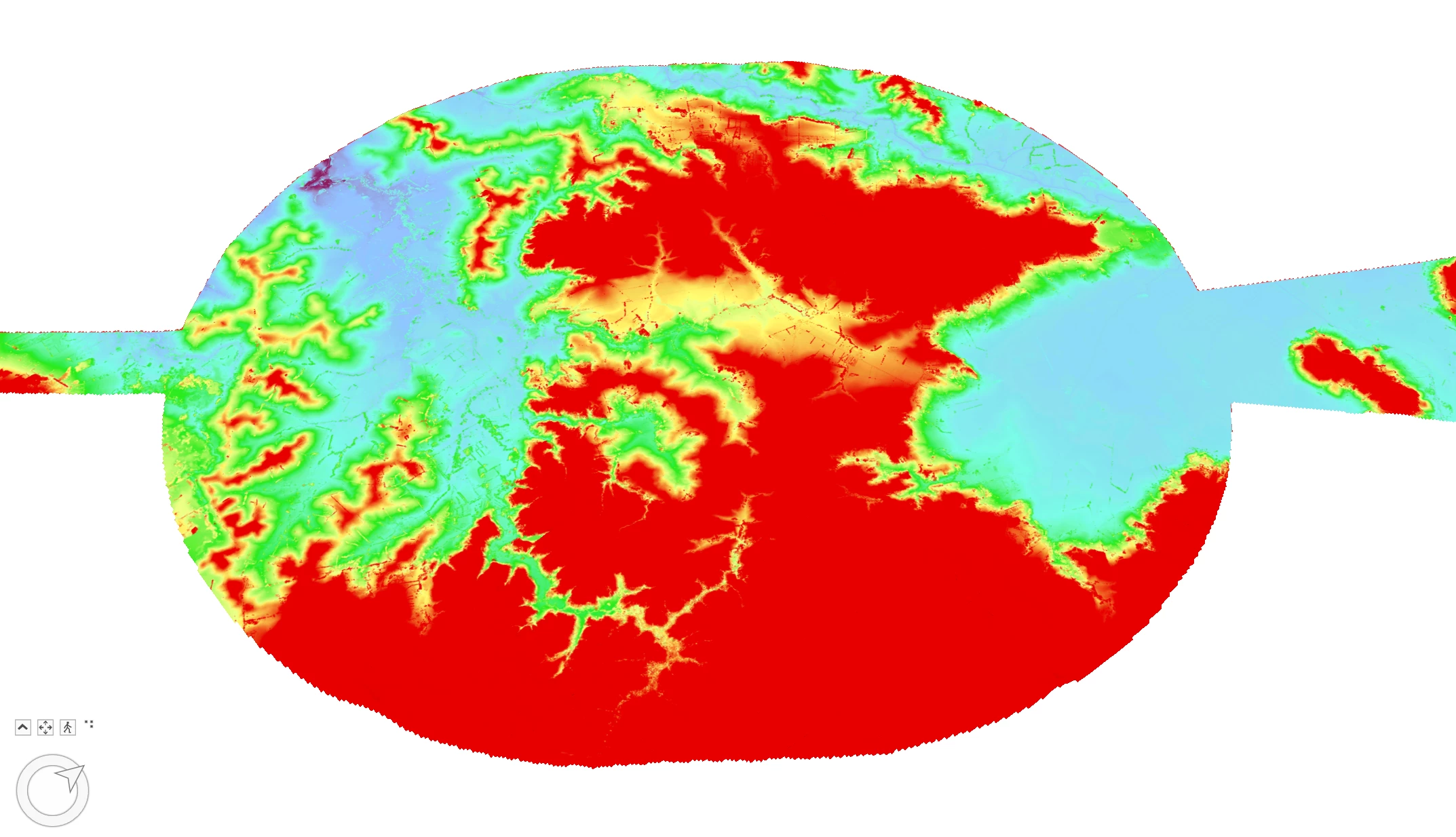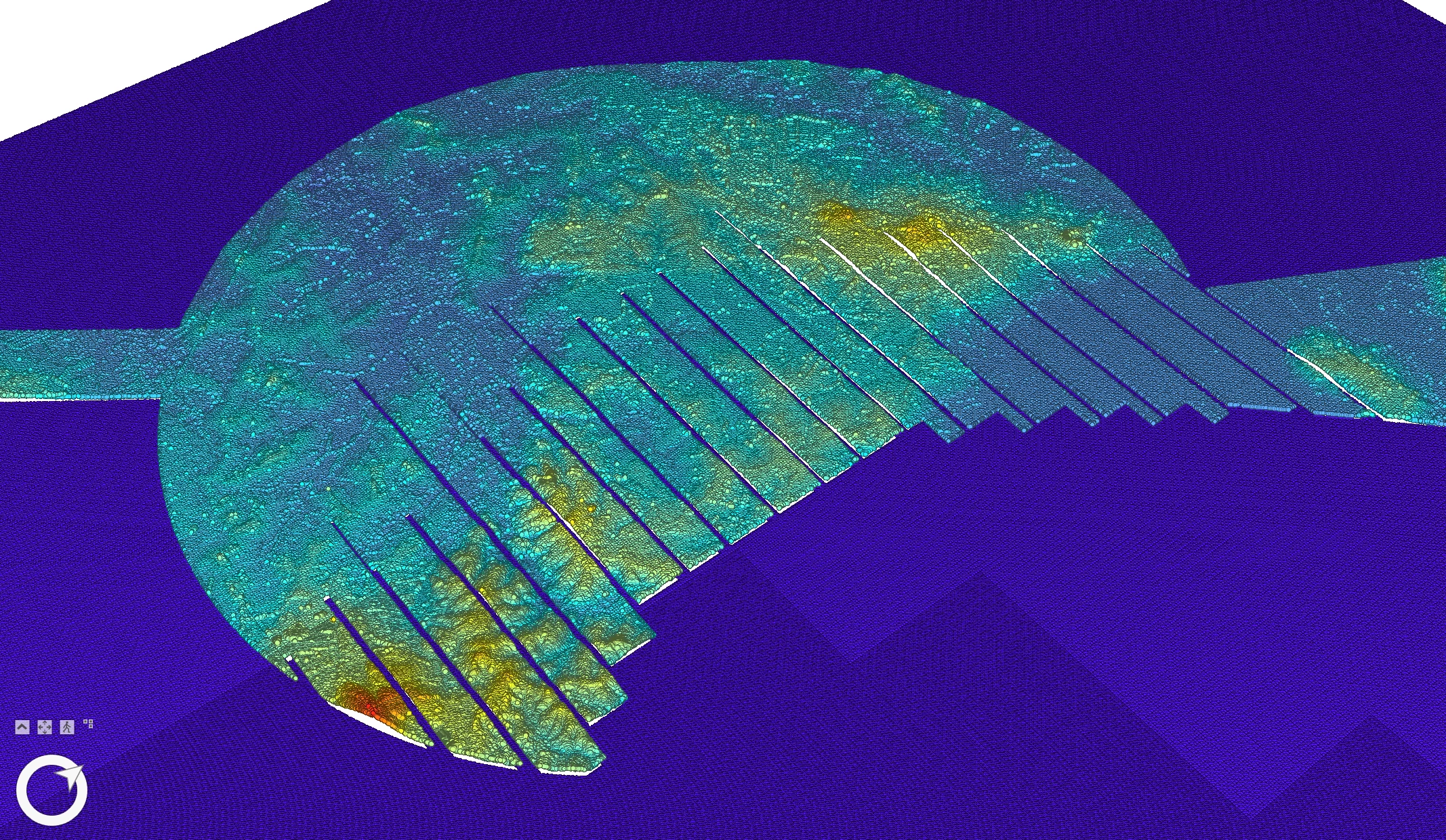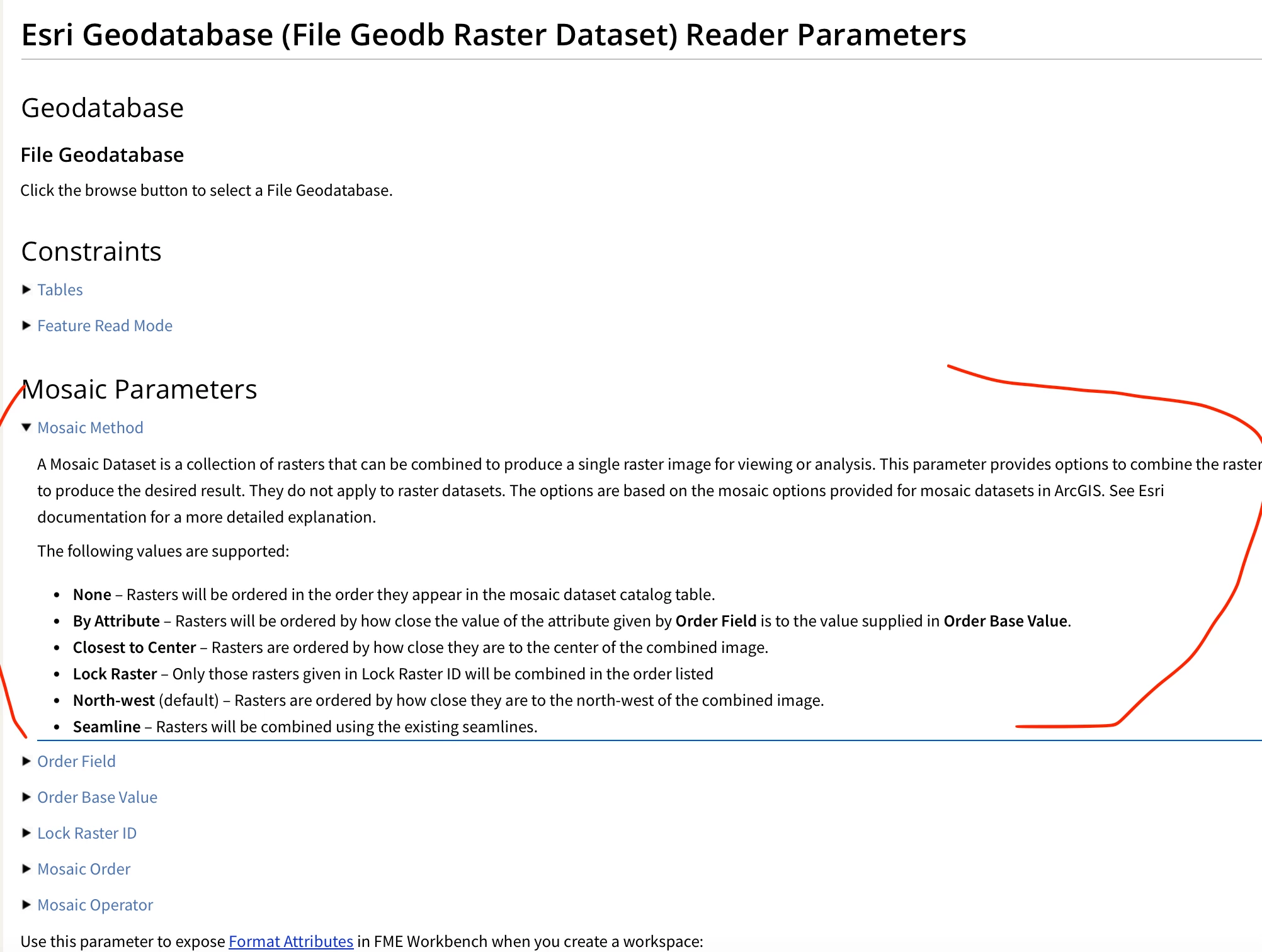Hi there,
I have created a Mosaic Dataset in ArcGIS Pro from downloaded 1m DSM GeoTIFFs. This displays fine in ArcGIS Pro. The boundary of the mosaic is clipped to the extent of the data I want to analyze.

I need to convert this to LAS to run some ArcGIS GP tools. So I have done this using the Mosaic Dataset as an input in FME:

Esri Geodatabase Raster → Point Cloud Combiner → LAS Writer
The output shows some incorrect data striping and looks like it missed some areas. In ArcGIS Pro:

In FME Inspector:

I don’t see any out of memory errors or issues with reading the Mosaic data in the FME logs.
Any ideas?
Thanks,
Marc







